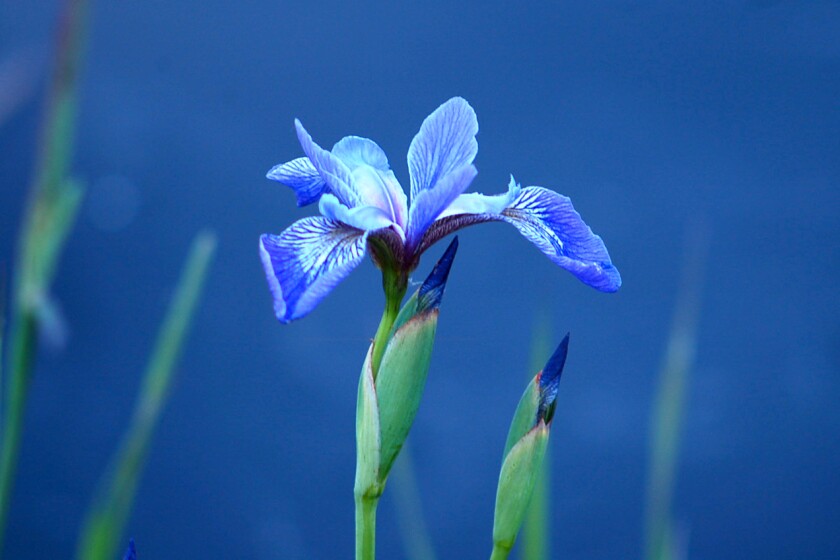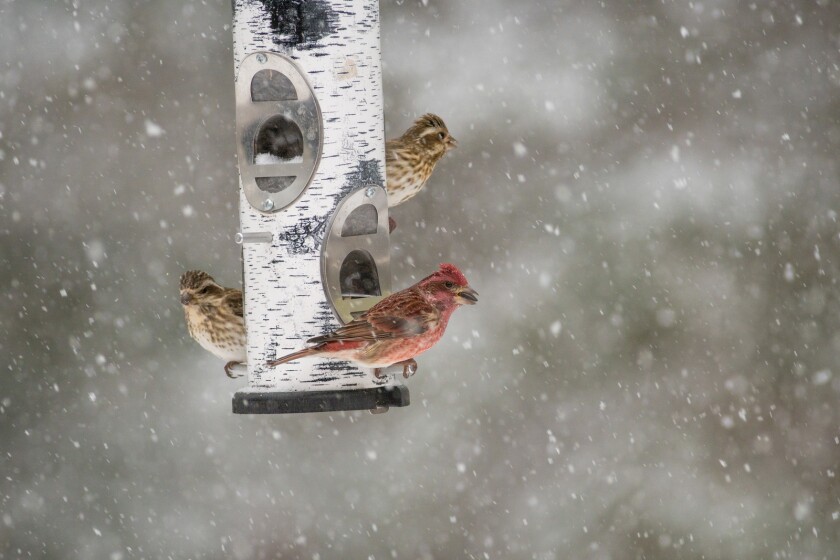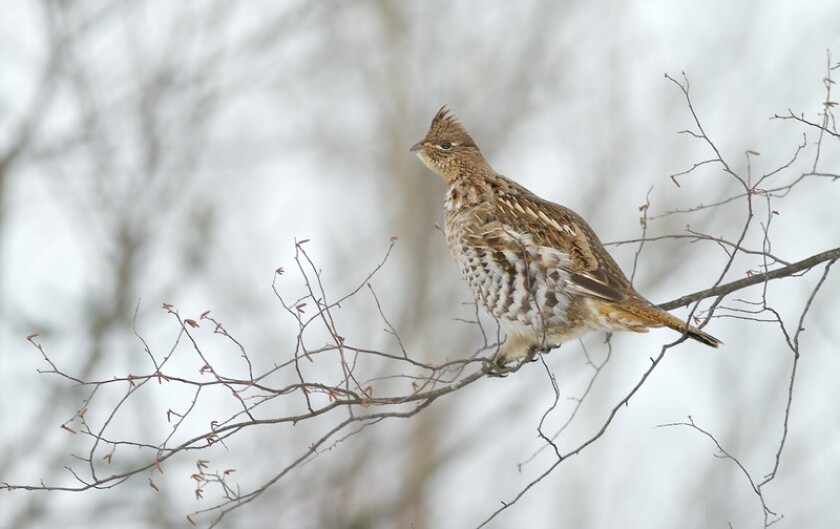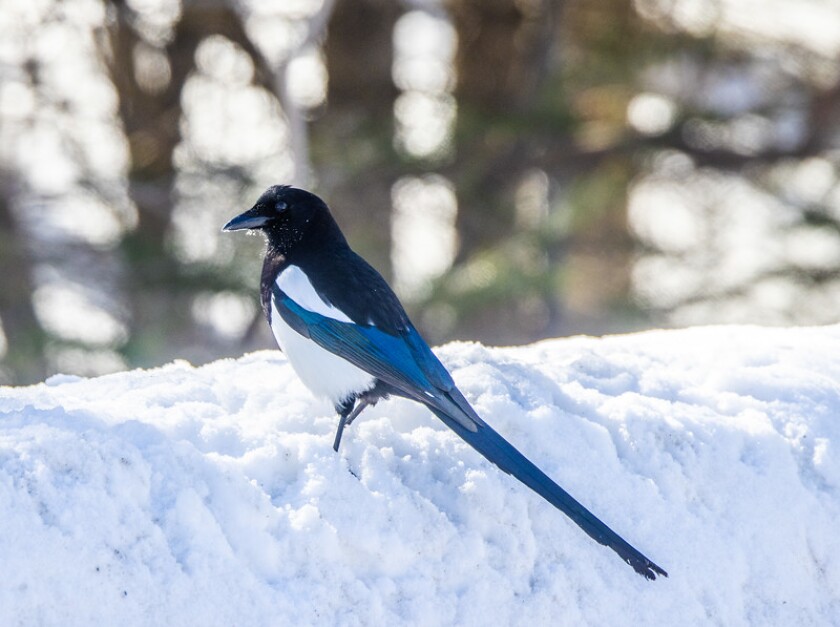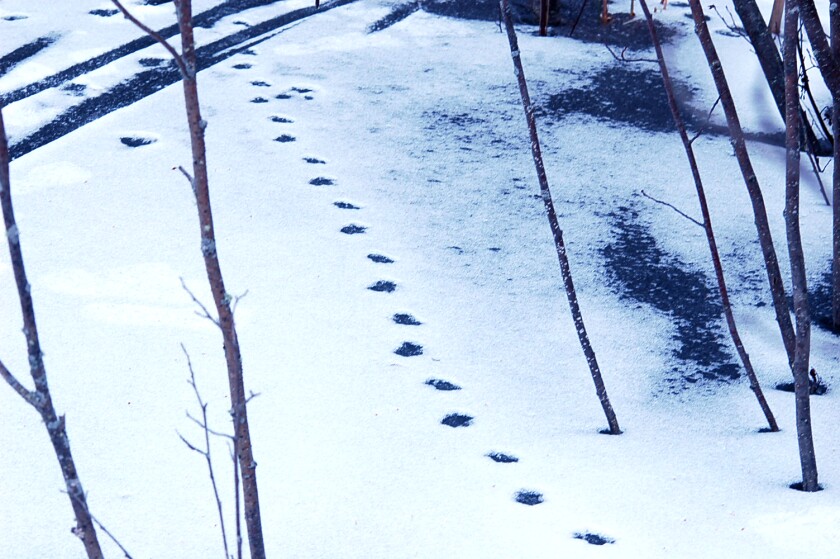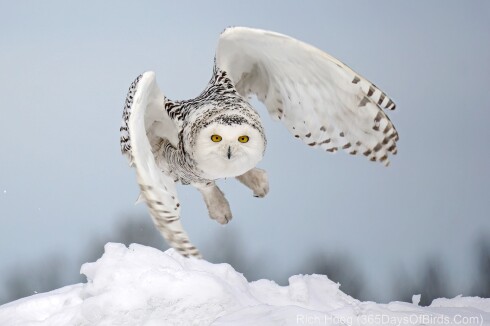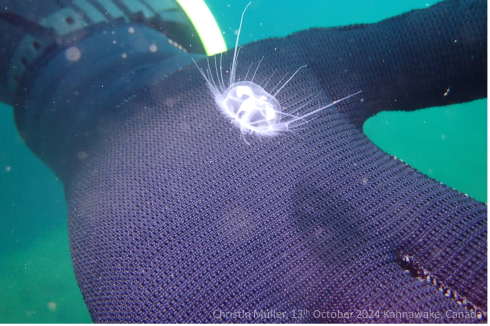As soon as the ice was strong enough, I was out on the nearby swamp. It was not only a good place to observe the cold season, but also an easy path to walk as I traveled between the woods and the lake.
Once we received a snowfall, this small wetland became an excellent location for observing the movement of local wildlife. Not only did I walk here, but so did these critters. Even if the snowfall is less than 1 inch, this white substrate records their movements when I am not here.
ADVERTISEMENT
Virtually every walk I’ve had during December and January, I have seen animal tracks of their active nocturnal lives. Deer, red and gray foxes, coyotes, weasels, minks, mice, voles and shrews have revealed their presence.
At some sites, I also found sporadic tracks of snowshoe hares, fishers and otters. It is interesting to note that though I’ve walked here dozens of times and found their tracks regularly, I never once saw the track makers anywhere in the swamp.
This swamp is not that different from the plethora of others in the Northland. Just passing by, it does not look like much. At this time of year, the colors are a bit bland and brownish.
The plants living here appear dead, but since most are perennials, they stay alive below the soil and water. Cattails, reeds and sedges abound as do the small woody shrubs of leatherleaf. Their brown leaves remain on the plants all winter. There is also a small growth of Labrador tea with its curled leaves. And there are the many patches of peat moss. The few trees living in the swamp are all small: tamaracks, black spruces and alders.
As I walk through this growth on a January day, I see something else that causes me to pause and look closer: a growth of irises in their winter apparel of brown and gray with stalks holding pods at the top. These pods are now open to reveal the seeds. Standing a foot or two above the water’s surface, they are easy to see, but not like the ones that I remember at this location last June.
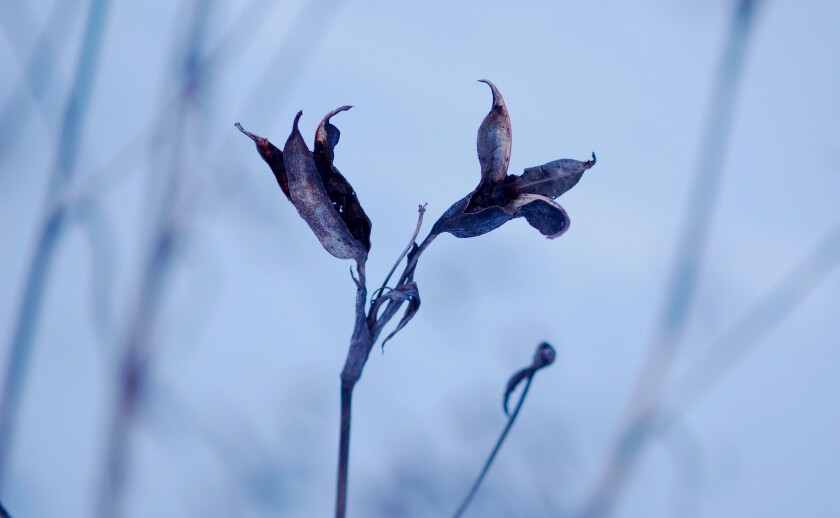
Passing the swamp at that time, I stop to take a closer look. Then, in early summer, the growth of irises (often called northern blue flag irises) is hard to miss. The petals and sepals open to be a deep blue above the green stalks. A closer look shows more colors, even yellows, at the base of the petals.
These blue flags are not the only flora of the swamp blooming in early summer and as I look among the swamp plants I see more. The prolific leatherleaf plants hold their small bell-shaped white flowers. Those of Labrador tea are also white, but larger and stick up above the plants.
ADVERTISEMENT
Out in the water floats the elliptical leaves of the yellow pond lily with its cup-shaped yellow flowers. At the edge, near the irises are growths of the white flowers of water calla (water arum) with its large oval-shaped petals.
But the irises that keep us coming back. As I look at the irises in January, I realize I’m not the only one attracted to the flowers. Insects drawn to the blooms pollinated them and the plant then formed these pods in late summer. Each pod holds many seeds.
Now, in the dry air of winter, they open to disperse the seeds. The irises of June become the irises of January.

